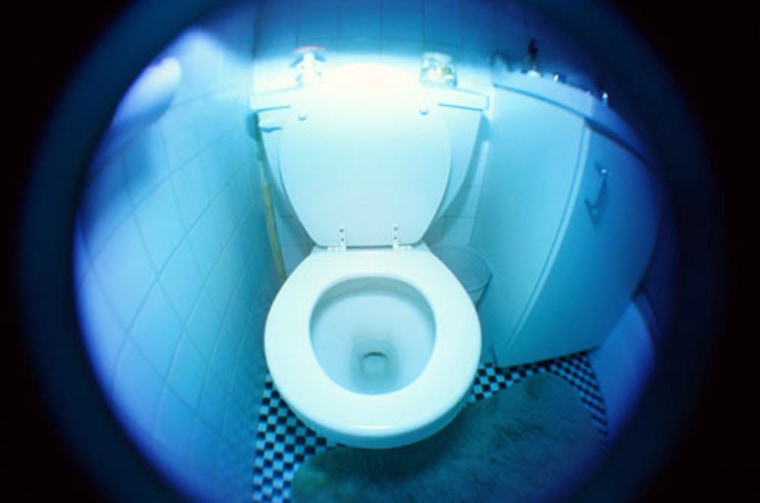As anyone who has potty trained a toddler or lived with a bunch of guys knows, pee splash-back is a costly act: It takes a toll on the bathroom floor and anyone standing nearby.
While there may be little hope for toilet splash-back, with exception of being a really sharp shooter, scientists have found that regarding peeing at a urinal, there's some real room for improvement.
Enter the Splash Lab at Brigham Young University, where researchers are trying to figure out how to prevent urinal splash-back. Fluid dynamics scientist Randy Hurd and his graduate adviser, Tadd Truscott, created a model of the male urethra on a 3-D printer — a cylinder measuring 0.31 inches by 0.12 inches (8 millimeters by 3 millimeters). The urethra was attached to a pressurized container with tubing. The team sent a steady stream of dyed water through the tubing at a urine flow rate equivalent to that of a middle-age man, or about 0.7 ounces per second (21 milliliters per second).
They used high-speed video cameras to record the "urine stream " as it struck a solid surface (a stand-in for the porcelain back of a urinal) and a free surface to represent the standing water in the "potty." The researchers placed white paper below these surfaces to track droplets of splash.
Before reaching the urinal walls, the urine stream broke up into individual droplets. "The droplet impacts the surface, flattens out and portions of it are propelled backward, causing small droplets to break off," Hurd told LiveScience.
See Video of the Pee Splash-Back Experiment
Their results revealed that size and speed are not critical in determining this splash-back. Rather, it's all about angle — and the smaller the angle, the better. The greatest pee splash occurred when the urine stream came in angled perpendicular to the urinal wall, down to about 45 degrees. An impact angle that was slightly smaller gave the cleanest results.
"If you can impact that porcelain before stream breakup occurs, you will be in good shape," Hurd said. "Often, aiming for the sidewalls is the best approach. If you can reduce angle and stand closer, that is ideal. If you can only do one, stand closer. If standing closer isn't an option, reduce the impact angle."
Toilets are another story — one that involves sitting.
When a guy stands to relieve himself, his urine must travel five times farther to the water or porcelain surface than if he were sitting. That travel distance means plenty of time for the stream to break up into separate droplets.
"These high-energy impactors barrage the surface rapidly, causing deep cavities and circular splash curtains, which emit satellite droplets," Hurd explained. "Much splash ensues, and it is physically impossible to prevent a portion of these satellite droplets from clearing the toilet-bowl rim and impacting undesired targets beyond. Sitting while urinating is generally frowned on in the male community, but the considerate and scientifically astute among the male species should be willing to admit that sitting is the logical choice."
Toilets do have a splash-free zone right around the rim of the bowl, which increases the odds of actually missing the bowl altogether, Hurd noted. "I wouldn't recommend this approach to anyone but military snipers," he added.
The results of the urinal splash-back study will be presented Nov. 24 at the American Physical Society Division of Fluid Dynamics meeting in Pittsburgh.
